
- Source: THE NEW YORK TIMES
- Author: Siddhartha Mitter
- Date: APRIL 13, 2024
- Format: PRINT AND DIGITAL
In the Nigeria Pavilion, Criticism Meets Optimism
The group show “Nigeria Imaginary” will be one of the most ambitious African presentations ever at the Venice Biennale
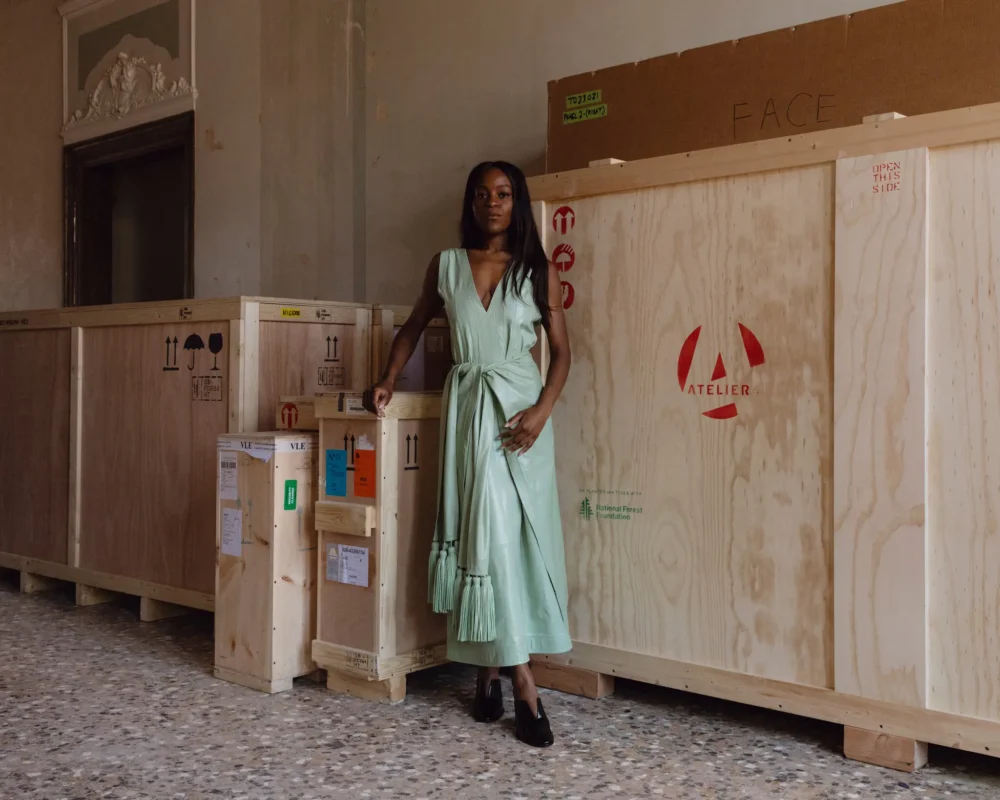
Aindrea Emelife, the curator of the “Nigeria Imaginary” pavilion at this year’s Venice Biennale, during installation earlier this month. Matteo de Mayda for The New York Times
People in Lagos, Nigeria’s largest city, are hardly shy. The stereotype runs toward boisterousness, worn as a point of pride. But when the artist and poet Precious Okoyomon recorded interviews with some 60 city residents in January for an art project, the unusual questions — like “Who was responsible for the suffering of your mother?” — proved disarming.
Okoyomon is based in Brooklyn, but lived in Lagos as a child and still visits there frequently. The artist was collecting material for a sonic and sculptural installation that will be presented in the Nigeria Pavilion at this year’s Venice Biennale. The event, one of the art world’s most important, opens for previews next week and to the public on April 20.
Okoyomon’s steel-framed structure, erected in a courtyard, imagines a kind of radio tower, decked with bells and colonized by creeping vines. Motion sensors on the tower activate a soundtrack: It will play in the courtyard and also online, for anyone to tune in. It mixes poems by Okoyomon with music and passages from those interviews, whose respondents range from fellow artists to “strangers, someone’s cook, someone’s auntie,” Okoyomon said.
After some wary first reactions to the intimate 12-question protocol (adapted from another poet, Bhanu Kapil), the conversations grew vulnerable and real, Okoyomon said. The resulting sound piece, was “a kind of speaking in tongues,” as if tapping the unconscious of the city, Okoyomon added.
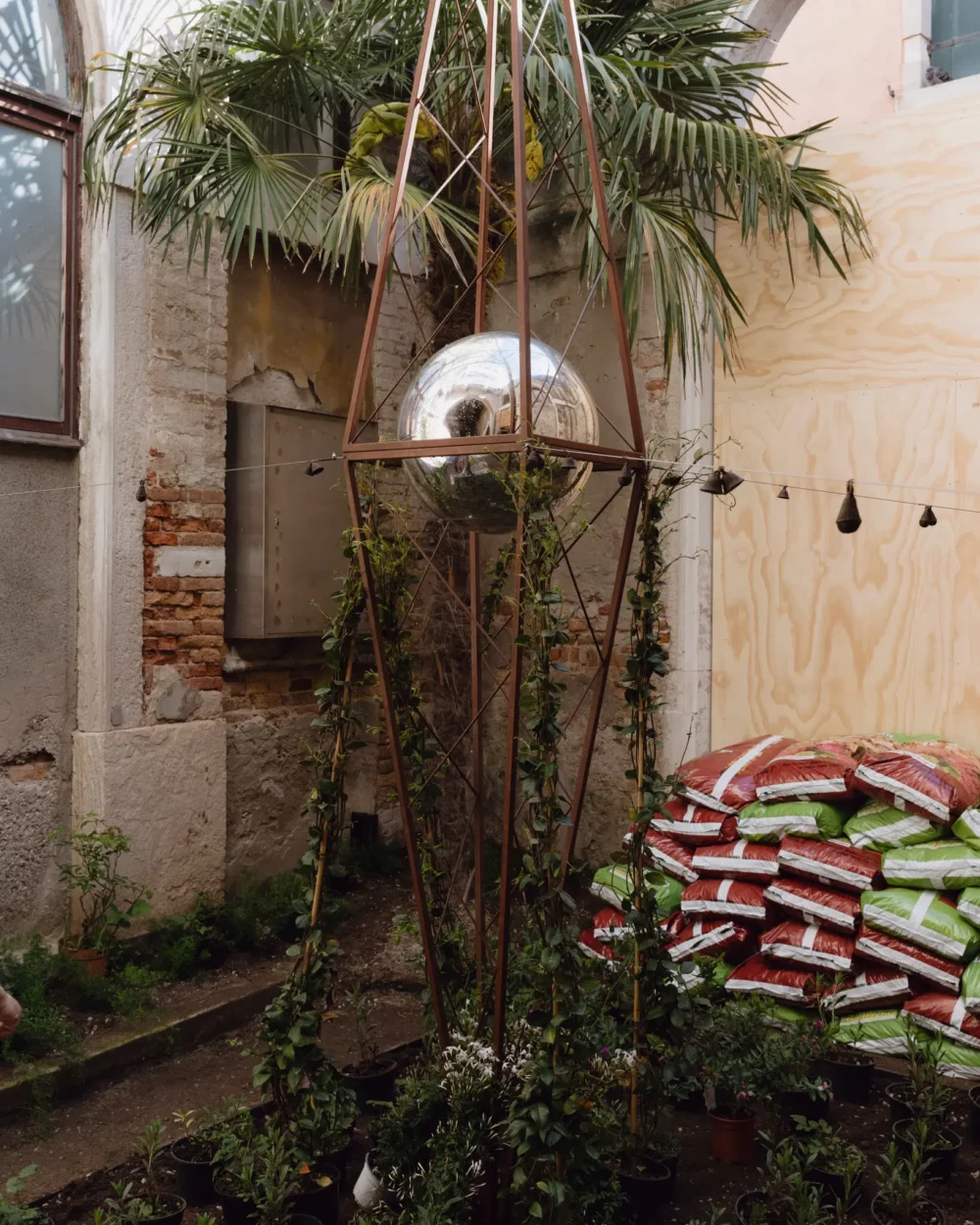
Precious Okoyomon’s steel-framed structure being installed at the pavilion on Friday. Motion sensors on the tower will activate a soundtrack of poems by Okoyomon with music and passages from interviews conducted in Lagos. Matteo de Mayda for The New York Times
Okoyomon is a Venice veteran: In 2022, the artist presented a major installation in the Biennale’s main exhibition. But this year Okoyomon is one of the eight lauded artists to represent Nigeria in the country’s second-ever Venice pavilion — one of still relatively few African presentations at the Biennale, and one of the most ambitious in concept and scale.
Titled “Nigeria Imaginary,” the pavilion fills a semi-restored palazzo in the Dorsoduro district with projects that cast an oblique but pointed look at history. One is Yinka Shonibare’s exacting clay replicas of 150 of the Benin Bronzes that a British expeditionary force plundered in 1897; they accompany a bust of the raid’s British commander painted in batik patterns and placed in a vitrine, a kind of symbolic restitution awaiting the real thing.
In the most contemporary reference, a sculpture by Ndidi Dike made of 700 police-grade batons, together with photographs from mass protests against Nigerian police violence in 2020 — and their bloody repression — link popular struggles in the country to the Black Lives Matter movement in the United States, Britain and Brazil.
Other projects — by Tunji Adeniyi-Jones, Onyeka Igwe, Abraham Oghobase, Toyin Ojih Odutola and Fatimah Tuggar — span drawing and painting, video and photography, even A.I. and augmented reality. They suggest fresh ways for Nigerians, and also the world, to think of the country — a behemoth of some 220 million people that is often dismissed as a place of crisis or corruption.
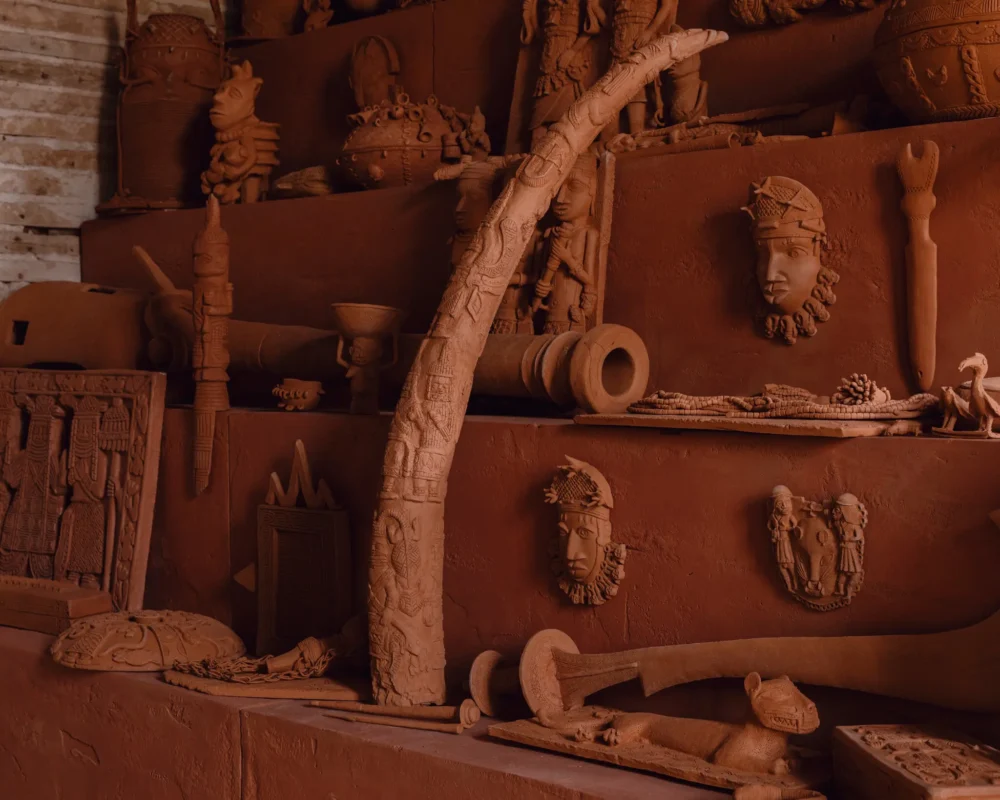
“Monument to the Restitution of the Mind and Soul” (2023), by Yinka Shonibare contains clay replicas of 150 of the Benin Bronzes that a British expeditionary force plundered in 1897. Matteo de Mayda for The New York Times
Thus Ojih Odutola’s charcoal and pastel works on linen stage free-spirited, gender-flexible characters in a setting inspired by Mbari houses, once built for ritual in southeastern Nigeria; a linked reference is the Mbari Club, which gathered Nigerian artists and writers in the 1960s. “I wanted the space to exist very open and free,” said Ojih Odutola, who is based in New York and Alabama, of the suite of drawings. In her imagined Nigeria, she added, creativity “is safe; it has room to roam; it has the right to change, to be mercurial.”
Adeniyi-Jones, who was raised in Britain and now lives in Brooklyn, has produced an overhead painting influenced by Nigerian Modernist artists and Italian ornamental tradition that will hang below the palazzo ceiling.
Oghobase, who works in photography and installations and is newly living in Canada, examines resource extraction in northern Nigeria through original and archival images plus diagrams from a vintage mining treatise.
Tuggar, who teaches at the University of Florida, considers the humble calabash gourd — a fruit with myriad traditional uses in West Africa, from drinking vessel to musical instrument to fishing float — in an installation that uses augmented reality to visualize alternatives to plastics and other consumer products.
And Onyeka Igwe, who lives in Britain, researched the Nigerian Film Unit, which produced films during the colonial period. Its archive in Lagos became neglected, and when Igwe visited, she said, “there were lots of stopped clocks; it was full of rotting reels.” Igwe’s film “No Archive Can Restore You,” studies this derelict space; a sound installation of speeches, poems and choral music then fills the room differently — hinting that colonial archives may be more burden than resource, crowding out other ways to connect with history.
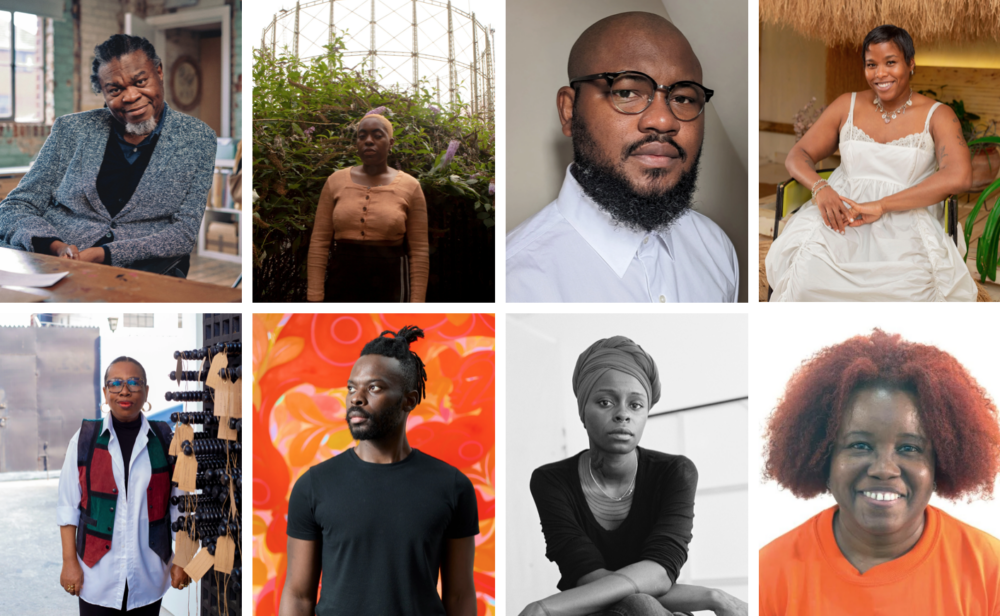
Eight artists will represent Nigeria at its second-ever Venice pavilion. Clockwise from top left, Yinka Shonibare, Onyeka Igwe, Abraham Oghobase, Precious Okoyomon, Fatimah Tuggar, Toyin Ojih Odutola, Tunji Adeniyi-Jones and Ndidi Dike.
To organize a national pavilion at the Biennale is itself a kind of history intervention. The pavilion system dates to the early 20th century and maps a hierarchy. There are permanent pavilions owned by around 30 mostly wealthy countries in the gardens where much of the Biennale takes place, many with distinguished architecture. Other countries present their pavilion in one-off spaces, some wedged into the Biennale’s other major exhibition complex in the Arsenale, others scattered around town.
The African presence has been slender and uneven. (Stories abound of slapdash pavilions underfunded by governments or handed to dubious foreign impresarios.) But recently, it has grown in numbers and rigor. In 2013, Angola won the Golden Lion for best pavilion. Nigeria’s first and only prior pavilion — a solid but smaller affair than this year’s — came in 2017. In 2019, Ghana presented a star-studded show including El Anatsui and Lynette Yiadom-Boakye.
This year 13 African countries are presenting pavilions, up from nine in 2022. The paucity is understandable given more urgent economic development priorities, said Phillip Ihenacho, the director of the Museum of West African Art, known as MOWAA, now under construction in Benin City, Nigeria. “The decision to do anything in Venice is a difficult one,” Ihenacho said. “You have to ask yourself, ‘Why spend money on something which could be regarded as a vanity project?’”
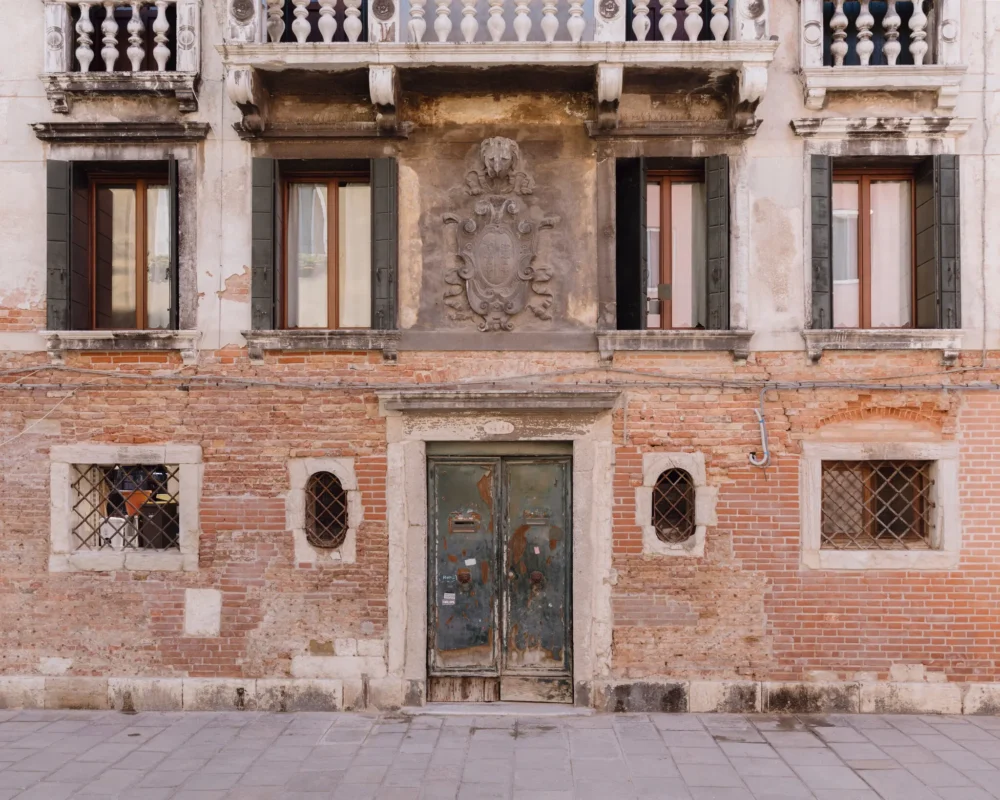
The Nigeria pavilion fills a semi-restored palazzo in Venice’s Dorsoduro district with projects that cast an oblique but pointed look at history. Matteo de Mayda for The New York Times
But a strong pavilion sends a message, whether from a government signaling cultural investment, or, in Nigeria’s case this year, from private backers. Although commissioned by the Nigerian government, as Venice rules require, the pavilion has been organized by MOWAA. The pavilion’s top funder is Qatar Museums; other supporters include galleries representing the artists, and Nigerian and foreign companies and collectors.
For MOWAA, whose inception was linked to the fraught prospect of many Benin Bronzes returning to Africa, the pavilion conveys a commitment to contemporary art, Ihenacho said. With the first building due for completion late this year, the plan is to bring the Venice show to Benin City — possibly after one or two international stops — as the inaugural exhibition, he said.
On a hot, dusty Thursday in February, Aindrea Emelife, the pavilion’s curator, who will also lead MOWAA’s modern and contemporary department, was crisscrossing Lagos, finalizing things. She met with Dike, the only pavilion artist living full-time in Nigeria. Though they all have Nigerian roots, the others either grew up overseas, or moved away from Nigeria at some point.
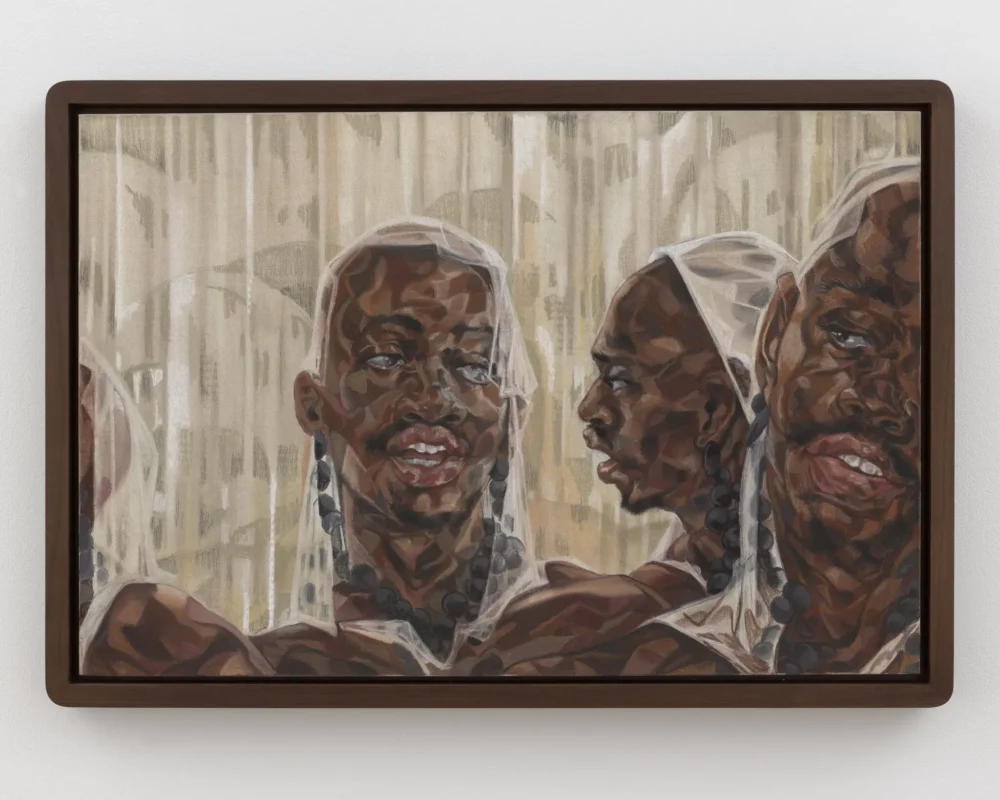
“Congregation,” (2023) by Toyin Ojih Odutola. Ojih Odutola’s charcoal and pastel works on linen stage free-spirited, gender-flexible characters in a setting inspired by traditional structures known as Mbari houses. Via Toyin Ojih Odutola and Jack Shainman Gallery, New York.
Emelife herself grew up in Britain. Though she anticipates criticism that the show favors overseas-based artists, migration — and sometimes return — are part of the Nigerian experience, she said. “People are always leaving, and that’s important to articulate with presenting Nigeria as a place.”
Besides, she added: “I don’t think you can remove yourself intrinsically from Nigeria.” Indeed, if anything, pavilion artists are deepening their ties. Shonibare, for instance, opened a Nigerian foundation in 2019 that operates two residency centers and a sustainable farm.
Emelife’s next stop was the home of a local collector to borrow some letters by Ben Enwonwu, an important Nigerian Modernist painter, for a vitrine presentation of documents from the 1960s and 1970s in the pavilion. Many artists in that period were invested in connecting the Western canon with local aesthetics, culture and history.
“It’s important that this is not presented in isolation as a new moment,” Emelife said of the contemporary work in the pavilion. “I’ve met people who had no idea there was a Modernist period in Nigeria.” (Her concern dovetails, as it happens, with the Biennale’s main exhibition this year, which the curator Adriano Pedrosa has loaded with 20th-century Modernists of the Global South.)
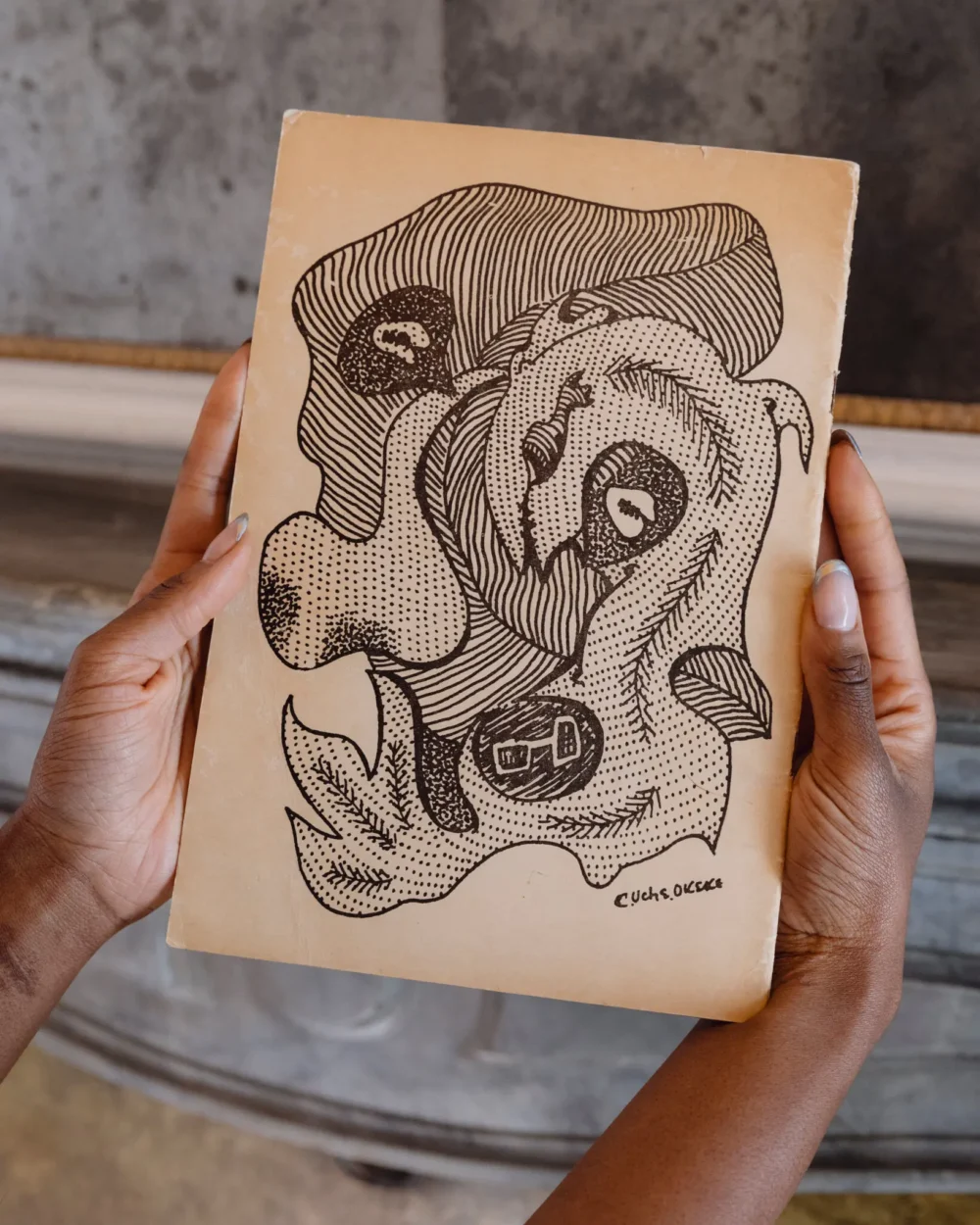
Emelife visited a local collector in Lagos to borrow artifacts from the 1960s and 70s for a vitrine in the pavilion. Matteo de Mayda for The New York Times

Her finds included magazines, drawings and a souvenir dish from Festac ’77, an international arts and culture festival held in Lagos and Kaduna, Nigeria, in 1977. Matteo de Mayda for The New York Times
With “Nigeria Imaginary” as the pavilion theme, Emelife makes a scholarly reference — to sociological theories of nationhood or to the “imaginary” in the work of the psychoanalyst Jacques Lacan, or the stories and illusions we tell ourselves to find structure in our surroundings. In Nigeria, where considerable dysfunction has become normalized — for instance, the widespread use of home generators and inverters to cope with the incessant power outages — that concept seems apt.
But the different projects in the show also make visitors privy, if indirectly, to a national pastime: diagnosing the country’s problems. “The trouble with Nigeria,” Chinua Achebe wrote in a 1983 essay by that title, “has become the subject of our small talk in much the same way as the weather is for the English.” (His analysis in a nutshell: bad leadership.)
That habit remains. “Everyone’s the minister of something!” Emelife said. “There’s so much discussion about what Nigeria needs, or Nigeria should be like.” Her wish for the exhibition, she said, was to prompt more expansive dreaming. “It will hopefully be energizing, by being honest, but also energizing, by being utopic,” she said. After all, she added, “Even when we’re critical, we’re critical because we’re optimistic about what a great place it could be.”
Dike, the Lagos lifer and detractor of police violence, agreed. “There’s always these not-so-positive discussions about Nigeria,” she said. “But this is a very dynamic cultural catalyst and hub for the continent — and the world. It’s about time we give Nigeria its due.”
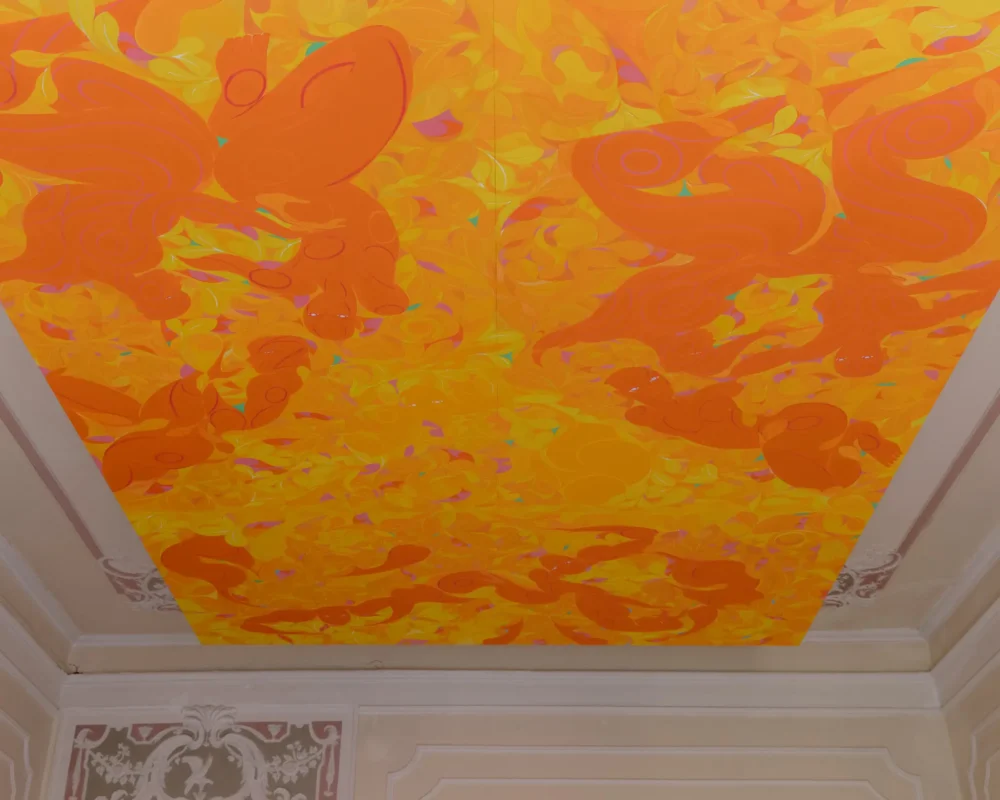
“Celestial Gathering,” by Tunji Adeniyi-Jones, on the ceiling of the palazzo, was influenced by Nigerian Modernist artists and Italian ornamental tradition. Matteo de Mayda for The New York Times

